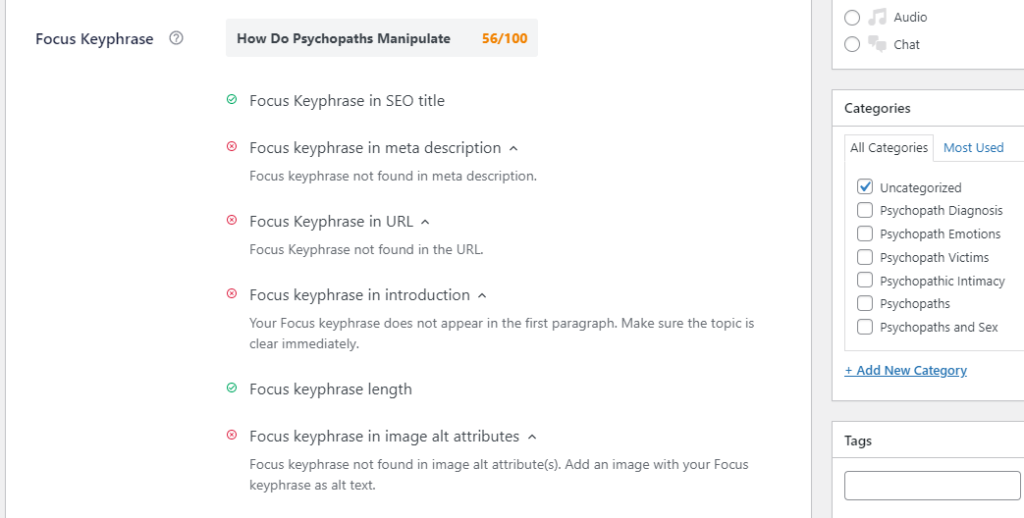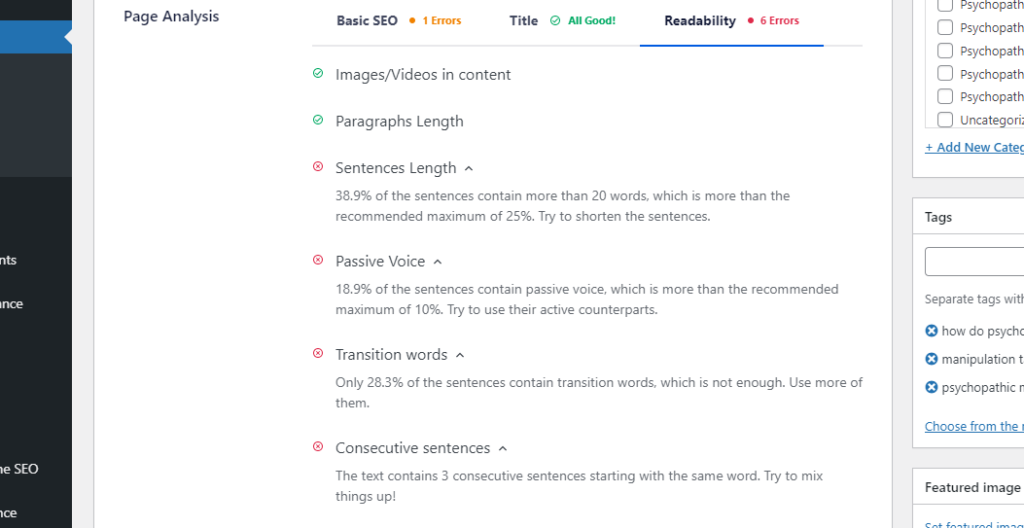There are different kinds of business structures, you must choose the one that is right for you.
Sole proprietorship
A sole proprietorship is easy to form and gives you complete control of your business. You’re automatically considered to be a sole proprietorship if you do business activities but don’t register as any other kind of business.
Sole proprietorships do not produce a separate business entity. This means your business assets and liabilities are not separate from your personal assets and liabilities. You can be held personally liable for the debts and obligations of the business. Sole proprietors are still able to get a trade name. It can also be hard to raise money because you can’t sell stock, and banks are hesitant to lend to sole proprietorships.
Sole proprietorships can be a good choice for low-risk businesses and owners who want to test their business idea before forming a more formal business.
Partnership
Partnerships are the simplest structure for two or more people to own a business together. Individuals may create a partnership by oral or written agreement. In a General Partnership, the partners share personal liability for all claims against the partnership, as well as share all profits and losses. Profits are taxed as personal income for each individual partner.
There are three common kinds of limited partnerships (LP) limited liability partnerships (LLP) and limited liability limited partnership (LLLP).
Limited partnerships have only one general partner with unlimited liability, and all other partners have limited liability. The partners with limited liability also tend to have limited control over the company, which is documented in a partnership agreement. Profits are passed through to personal tax returns, and the general partner — the partner without limited liability — must also pay self-employment taxes.
Limited liability partnerships are similar to limited partnerships, but give limited liability to every owner. An LLP protects each partner from debts against the partnership, they won’t be responsible for the actions of other partners.
A Limited Liability Limited Partnership is a Limited Partnership that chooses to become an LLLP by including a statement to that effect in its certificate of limited partnership. This type of business structure may shield general partners from liability for obligations of the LLLP. Filing with your state may be required.
Partnerships can be a good choice for businesses with multiple owners, professional groups (like attorneys), and groups who want to test their business idea before forming a more formal business.
Limited liability company (LLC)
An LLC lets you take advantage of the benefits of both the corporation and partnership business structures.
LLCs protect you from personal liability in most instances, your personal assets — like your vehicle, house, and savings accounts — won’t be at risk in case your LLC faces bankruptcy or lawsuits.
Profits and losses can get passed through to your personal income without facing corporate taxes. However, members of an LLC are considered self-employed and must pay self-employment tax contributions towards Medicare and Social Security.
LLCs can have a limited life in many states. When a member joins or leaves an LLC, some states may require the LLC to be dissolved and re-formed with new membership — unless there’s already an agreement in place within the LLC for buying, selling, and transferring ownership.
LLCs can be a good choice for medium- or higher-risk businesses, owners with significant personal assets they want to be protected, and owners who want to pay a lower tax rate than they would with a corporation.
Corporation
C corp
A corporation, sometimes called a C corp, is a legal entity that’s separate from its owners. Corporations can make a profit, be taxed, and can be held legally liable.
Corporations offer the strongest protection to its owners from personal liability, but the cost to form a corporation is higher than other structures. Corporations also require more extensive record-keeping, operational processes, and reporting.
Unlike sole proprietors, partnerships, and LLCs, corporations pay income tax on their profits. In some cases, corporate profits are taxed twice — first, when the company makes a profit, and again when dividends are paid to shareholders on their personal tax returns.
Corporations have a completely independent life separate from its shareholders. If a shareholder leaves the company or sells his or her shares, the C corp can continue doing business relatively undisturbed.
Corporations have an advantage when it comes to raising capital because they can raise funds through the sale of stock, which can also be a benefit in attracting employees.
Corporations can be a good choice for medium- or higher-risk businesses, businesses that need to raise money, and businesses that plan to “go public” or eventually be sold.
S corp
An S corporation, sometimes called an S corp, is a special type of corporation that’s designed to avoid the double taxation drawback of regular C corps. S corps allow profits, and some losses, to be passed through directly to owners’ personal income without ever being subject to corporate tax rates.
Not all states tax S corps equally, but most recognize them the same way the federal government does and taxes the shareholders accordingly. Some states tax S corps on profits above a specified limit and other states don’t recognize the S corp election at all, simply treating the business as a C corp.
S corps must file with the IRS to get S corp status, a different process from registering with their state.
There are special limits on S corps. S corps can’t have more than 100 shareholders, and all shareholders must be U.S. citizens. You’ll still have to follow strict filing and operational processes of a C corp.
S corps also have an independent life, just like C corps. If a shareholder leaves the company or sells his or her shares, the S corp can continue doing business relatively undisturbed.
S corps can be a good choice for a businesses that would otherwise be a C corp, but meet the criteria to file as an S corp.
B corp
A benefit corporation, sometimes called a B corp, is a for-profit corporation recognized by a majority of U.S. states. B corps are different from C corps in purpose, accountability, and transparency, but aren’t different in how they’re taxed.
B corps are driven by both mission and profit. Shareholders hold the company accountable to produce some sort of public benefit in addition to a financial profit. Some states require B corps to submit annual benefit reports that demonstrate their contribution to the public good.
There are several third-party B corp certification services, but none are required for a company to be legally considered a B corp in a state where the legal status is available.
Close corporation
Close corporations resemble B corps but have a less traditional corporate structure. These shed many formalities that typically govern corporations and apply to smaller companies.
State rules vary, but shares are usually barred from public trading. Close corporations can be run by a small group of shareholders without a board of directors.
Nonprofit corporation
Nonprofit corporations are organized to do charity, education, religious, literary, or scientific work. Because their work benefits the public, nonprofits can receive tax-exempt status, meaning they don’t pay state or federal taxes income taxes on any profits it makes.
Nonprofits must file with the IRS to get tax exemption, a different process from registering with their state.
Nonprofit corporations need to follow organizational rules very similar to a regular C corp. They also need to follow special rules about what they do with any profits they earn. For example, they can’t distribute profits to members or political campaigns.
A nonprofit corporation may take one of three forms:
- public benefit corporation operates for public or charitable purposes. Members may not sell their interests or receive distributions from the organization.
- A mutual benefit corporation exists to serve its members. Trade associations, social clubs, and fraternal organizations are examples of this type of nonprofit. Members are given broader voting rights and, while not entitled to receive distributions while the organization is operating, they are entitled to sell their memberships and receive distributions when the organization dissolves.
- A religious corporation is treated much like a public benefit corporation.
Nonprofits are often called 501(c)(3) corporations — a reference to the section of the Internal Revenue Code that is most commonly used to grant tax-exempt status.
| Business structure | Ownership | Liability | Taxes |
|---|---|---|---|
|
Sole proprietorship
|
One person
|
Unlimited personal liability
|
Personal tax only
|
|
Partnerships
|
Two or more people
|
Unlimited personal liability unless structured as a limited partnership
|
Self-employment tax (except for limited partners) Personal tax |
|
Limited liability company (LLC)
|
One or more people
|
Owners are not personally liable
|
Self-employment tax Personal tax or corporate tax |
|
Corporation – C corp
|
One or more people
|
Owners are not personally liable
|
Corporate tax
|
|
Corporation – S corp
|
One or more people, but no more than 100, and all must be U.S. citizens
|
Owners are not personally liable
|
Personal tax
|
|
Corporation – B corp
|
One or more people
|
Owners are not personally liable
|
Corporate tax
|
|
Corporation – Nonprofit
|
One or more people
|
Owners are not personally liable
|
Tax-exempt, but corporate profits can’t be distributed
|
Other Types of Business Structures
Assumed Business Name
An assumed business name is a “trade name” or “fictitious business name” under which the business or operation is conducted and presented to the public. It is not the legal name of the person(s) who actually owns the business. An assumed business name must be distinguishable on the record from an assumed business name that is already registered or from any corporate name, limited partnership name, limited liability company name, limited liability partnership name, trademark, or service mark registered or reserved with the Secretary of State.
Individuals who choose to own a business under an assumed business name can register the name and declare that they are sole proprietors. A sole proprietor is a business owned personally by one owner. An assumed business name can be used by:
- a sole proprietor,
- a corporation,
- a partnership,
- a limited partnership,
- a limited liability company,
- a limited liability partnership, or,
- an association.
Association
An Association is an organized group of people who share in a common interest, activity, or purpose.
Cooperative
A cooperative is a business or organization owned by and operated for the benefit of those using its services. Profits and earnings generated by the cooperative are distributed among the members, also known as user-owners. Typically, an elected board of directors and officers run the cooperative while regular members have voting power to control the direction of the cooperative. Members can become part of the cooperative by purchasing shares, though the amount of shares they hold does not affect the weight of their vote.
Corporation Sole
A legitimate corporation sole is designed to ensure continuity of ownership of property dedicated to the benefit of a legitimate religious organization. A taxpayer cannot use a corporation sole created to avoid or evade income taxes as a means to exclude the taxpayer’s personal income from tax.
Estate
An Estate is generally a Sole Proprietorship and occurs when an individual owner passes away. Due to the legality and the operation of the business, it may be put into an estate status so the business can continue operating under an existing ownership until all legal issues have been resolved. An administrator or legal representative will be assigned to the estate. The business can be estate status for a long period of time.
Family Limited Partnership
A Family Limited Partnership (FLP) is a type of arrangement in which family members pool money to run a business project. Each family member buys units or shares of the business and can profit in proportion to the number of shares they own, as outlined in the partnership operating agreement.
Joint Venture
A Joint Venture is formed for a limited length of time to carry out a business transaction or operation.
Massachusetts Trust
A Massachusetts Trust is an incorporated business with the property being held and managed by the trustees for the shareholders. The trustees are considered employees since they work for the trust. Filing with your state may be required.
Professional Limited Liability Partnership (PLLP)
A PLLP is a limited liability partnership structure designed for licensed professionals. A person or group of persons licensed or otherwise legally authorized to render professional services, as defined in local or regional codes.
Series Limited Liability Company
A series limited liability company has the ability to partition its assets and liabilities among a set of separate limited liability companies. Each limited liability company may have different assets, economic structures, members, and managers. The profits, losses, and liabilities of each are legally separate from the others in the series, thereby creating a firewall between each entity. It also offers advantages of a partnership while limiting the liabilities of the members and series members.
Tenants in Common
A Tenants in Common allows 2 or more people to occupy the same business while retaining separate identities in regard to assets or liabilities resulting from business activities.
Tribal Government
Any Indian tribe, band, nation, or other organized group or community, including any Alaska Native village or regional or village corporation as defined in or established pursuant to the Alaska Native Claims Settlement Act (85 Stat. 688; 43 U.S.C. 1601 et seq.) which is recognized as eligible for the special programs and services provided by the United States to Indians because of their special status as Indians. 2 USC. Code § 658
Trust
A Trust is a legal relationship in which one person, called the trustee, holds property for the benefit of another person, called the beneficiary.
Combine different business structures
Designations like S corp and nonprofit aren’t strictly business structures — they can also be understood as a tax status. It’s possible for an LLC to be taxed as a C corp, S corp, or a nonprofit. These arrangements are far less common and can be more difficult to setup. If you’re considering one of these non-standard structures, you should speak with a business counselor or an attorney to help you decide.
Compare business structures
Compare the general traits of these business structures, but remember that ownership rules, liability, taxes, and filing requirements for each business structure can vary by state.
State Costs to Form an LLC
| State | Filing Fee | Recurring Fees |
|---|---|---|
| Alabama | $200 | $10 Annual Report $100 Annual Privilege Tax (minimum) |
| Alaska | $250 | $100 (every 2 years) |
| Arizona | $50 (plus publishing costs) | $0 (report due annually) |
| Arkansas | $45 online, $50 by mail | $150 Franchise Tax Report (annually) |
| California | $70 | $800 – Franchise Tax (annually) $20 – Statement of Information (annually) |
| Colorado | $50 | $10 (annually) |
| Connecticut | $120 | $80 (annually) |
| Delaware | $90 | $300 Franchise Tax (annually) |
| Florida | $125 | $138.75 (annually) |
| Georgia | $100 | $50 (annually) |
| Hawaii | $50 | $15 (annually) |
| Idaho | $100 | $0 (report due annually) |
| Illinois | $150 | $75 (annually) |
| Indiana | $95 online, $100 by mail | Biennial report – $32 online, $50 by mail |
| Iowa | $50 | $60 (biennial report) |
| Kansas | $160 online, $165 by mail | $55 (annually) |
| Kentucky | $40 | $15 (annually) |
| Louisiana | $100 | $30 (annually) |
| Maine | $175 | $85 (annually) |
| Maryland | $100 | $300 (annually) |
| Massachusetts | $500 | $500 (annually) |
| Michigan | $50 | $25 (annually) |
| Minnesota | $155 online, $135 by mail | $0 (report due annually) |
| Mississippi | $50 | $0 (report due annually) |
| Missouri | $50 (online), $105 (mail) | $0 |
| Montana | $70 | $20 (annually) |
| Nebraska | $105 | $10 (biennial report) |
| Nevada | $75, plus $150 for the initial list of officers | $150 Annual List of Members & Managers |
| New Hampshire | $100 | $100 (annually) |
| New Jersey | $125 | $75 (annually) |
| New Mexico | $50 | $0 |
| New York | $200 (plus publishing costs) | $9 (biennially) |
| North Carolina | $125 | $200 (annually) |
| North Dakota | $135 | $50 (annually) |
| Ohio | $99 | $0 |
| Oklahoma | $100 | $25 (annually) |
| Oregon | $100 | $100 (annually) |
| Pennsylvania | $125 (plus publishing costs) | $70 (decennial report) |
| Rhode Island | $150 | $50 (annually) |
| South Carolina | $110 | $0 |
| South Dakota | $150 | $50 (annually) |
| Tennessee | $300 (minimum) | $300 (minimum) |
| Texas | $300 | $0 report Franchise Tax |
| Utah | $70 | $20 |
| Vermont | $125 | $35 (annually) |
| Virginia | $100 | $50 (annually) |
| Washington | $200 | $60 (annually) |
| West Virginia | $100 | $25 (annually) |
| Wisconsin | $130 (online), $170 (mail) | $25 (annually) |
| Wyoming | $100 (mail), $102 (online) | $50 minimum (annually) |
Some people will look at the cost of starting an LLC as too expensive and want to form a Sole Proprietorship.
















